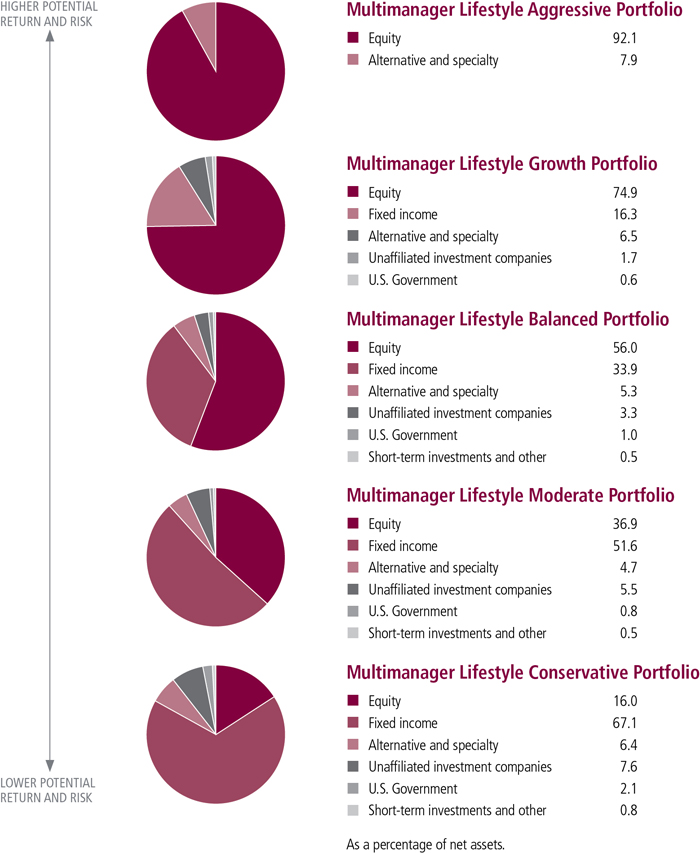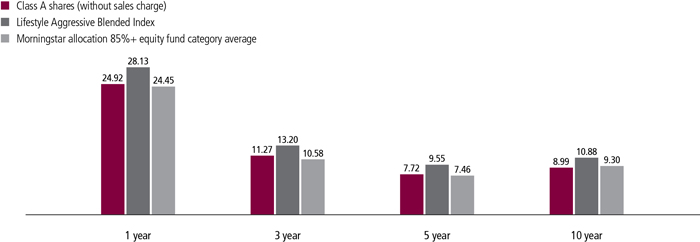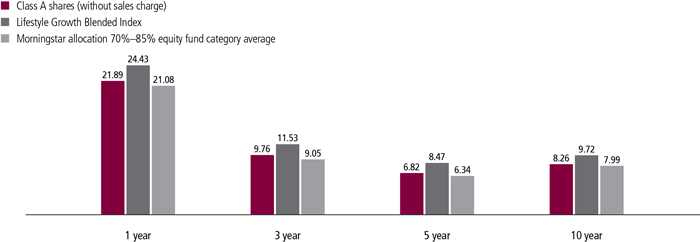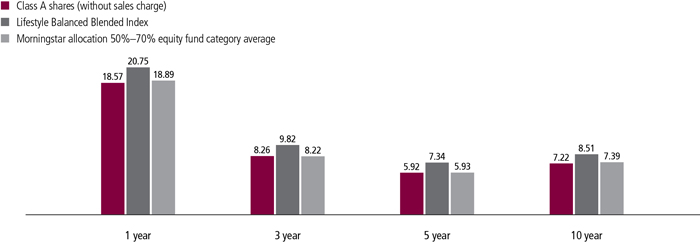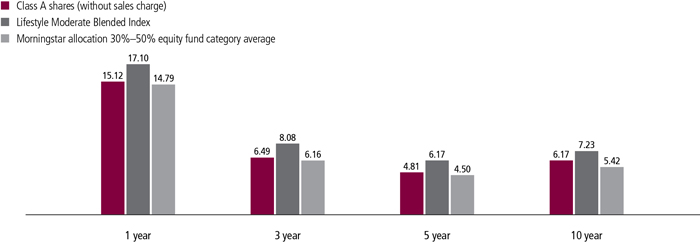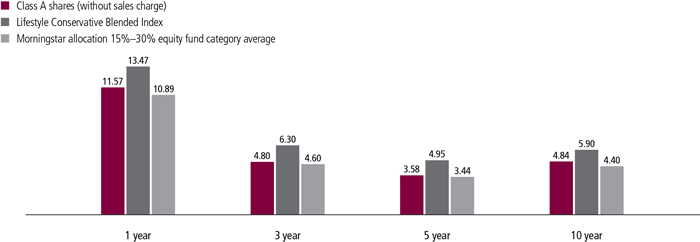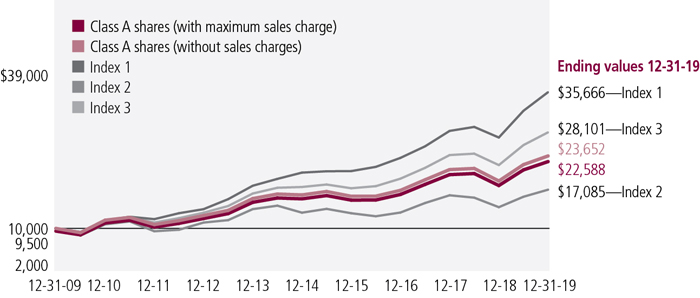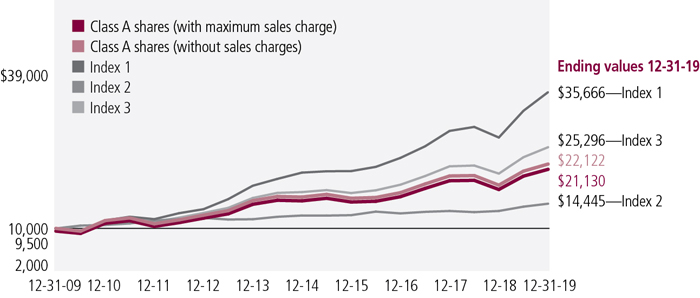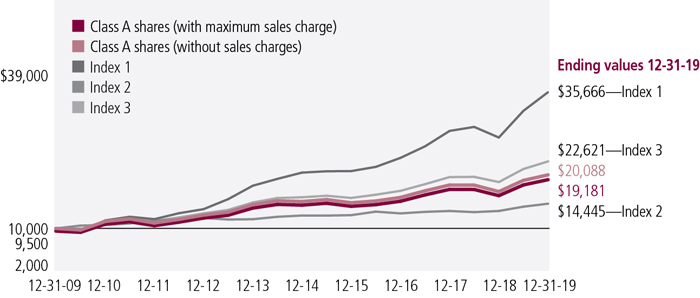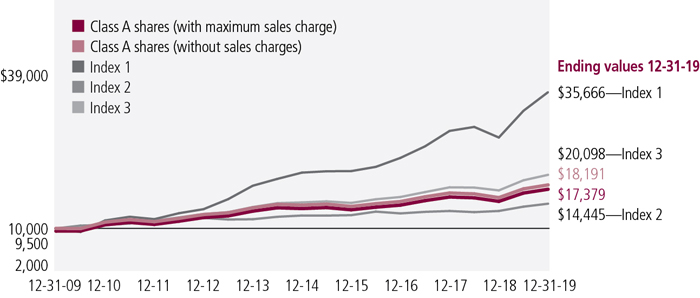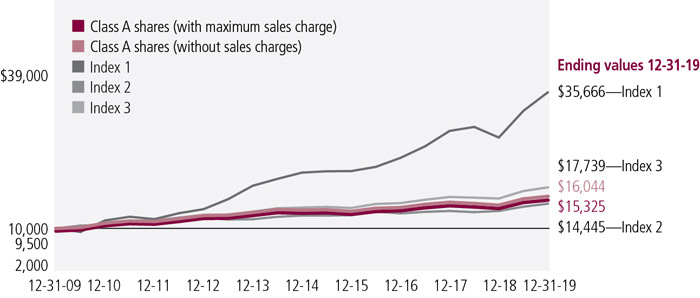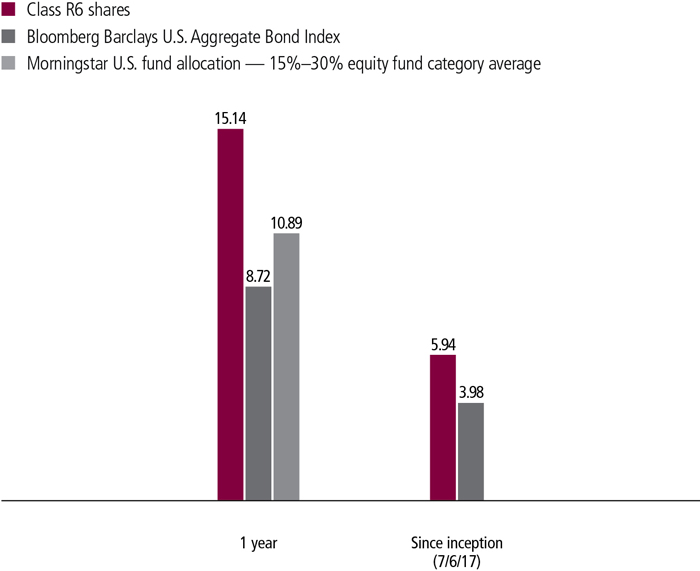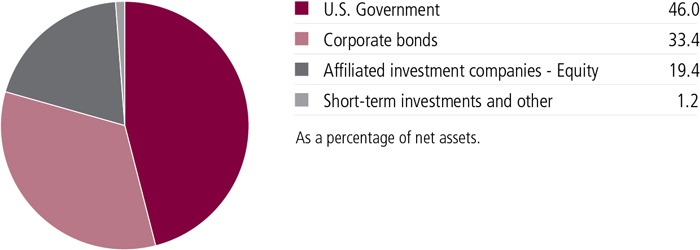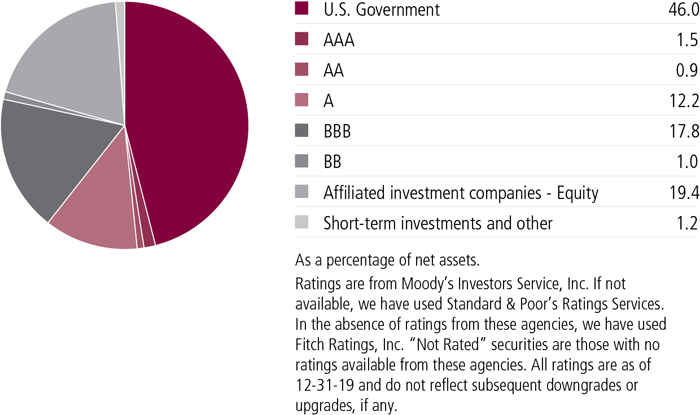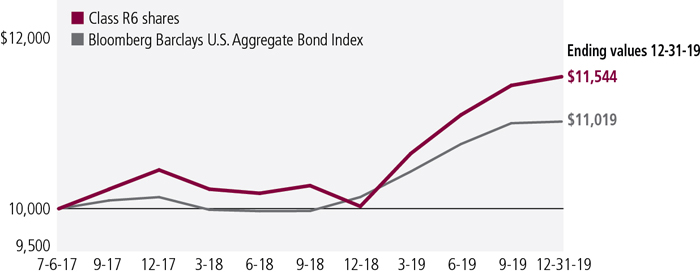Note 1—Organization
John Hancock Funds II (the Trust) is an open-end management investment company organized as a Massachusetts business trust. The Trust is registered under the Investment Company Act of 1940, as amended (the 1940 Act). It is a series company with multiple investment series (collectively, Multimanager Lifestyle Portfolios, or the portfolios and individually, the portfolio), five of which are presented in this report. The portfolios operate as “funds of funds” investing in affiliated underlying funds of the Trust, other funds in John Hancock group of funds complex, non-John Hancock funds and certain other permitted investments.
The portfolios may offer multiple classes of shares. The shares currently offered by the portfolios are detailed in the Statements of assets and liabilities. Class A and Class C shares are open to all investors. Class B shares are closed to new investors, subject to exceptions described in the portfolios’ prospectus. Class I shares are offered to institutions and certain investors. Class R1, Class R2, Class R3, Class R4 and Class R5 shares are available only to certain retirement plans. Class R6 shares are only available to certain retirement plans, institutions and other investors. Class 1 shares are offered only to certain affiliates of Manulife Financial Corporation (MFC). Class 5 shares are available only to the John Hancock Freedom 529 plans. Class B shares convert to Class A shares eight years after purchase. Class C shares convert to Class A shares ten years after purchase (certain exclusions may apply). Shareholders of each class have exclusive voting rights to matters that affect that class. The distribution and service fees, if any, and transfer agent fees for each class may differ.
The investment objectives of portfolios are as follows:
Multimanager Lifestyle Aggressive Portfolio
To seek long term growth of capital. Current income is not a consideration.
Multimanager Lifestyle Growth Portfolio
To seek long term growth of capital. Current income is also a consideration.
Multimanager Lifestyle Balanced Portfolio
To seek a balance between a high level of current income and growth of capital, with a greater emphasis on growth of capital.
Multimanager Lifestyle Moderate Portfolio
To seek a balance between a high level of current income and growth of capital, with a greater emphasis on income.
Multimanager Lifestyle Conservative Portfolio
To seek a high level of current income with some consideration given to growth of capital.
The accounting policies of the underlying funds in which the portfolios invest are outlined in the underlying funds’ shareholder reports, which include the underlying funds’ financial statements. These are available on the Securities and Exchange Commission (SEC) website at sec.gov. John Hancock underlying funds' shareholder reports are also available without charge by calling 800-225-5291 or visiting jhinvestments.com. The underlying funds are not covered by this report.
Note 2—Significant accounting policies
The financial statements have been prepared in conformity with accounting principles generally accepted in the United States of America (US GAAP), which require management to make certain estimates and assumptions as of the date of the financial statements. Actual results could differ from those estimates and those differences could be significant. The portfolios qualify as investment companies under Topic 946 of Accounting Standards Codification of US GAAP.
Events or transactions occurring after the end of the fiscal period through the date that the financial statements were issued have been evaluated in the preparation of the financial statements. The following summarizes the significant accounting policies of the portfolios:
Security valuation. Investments are stated at value as of the scheduled close of regular trading on the New York Stock Exchange (NYSE), normally at 4:00 P.M., Eastern Time. In case of emergency or other disruption resulting in the NYSE not opening for trading or the NYSE closing at a time other than the regularly scheduled close, the net asset value (NAV) may be determined as of the regularly scheduled close of the NYSE pursuant to the portfolios' Valuation Policies and Procedures.
In order to value the securities, the portfolios use the following valuation techniques: Investments in affiliated underlying funds and other open-end mutual funds are valued at their respective NAVs each business day. Equity securities, including exchange-traded or closed-end funds, are typically valued at the last sale price or official closing price on the exchange or principal market where the security trades. In the event there were no sales during the day or closing prices are not available, the securities are valued using the last available bid price. Debt obligations are valued based on the evaluated prices provided by an independent pricing vendor or from broker-dealers. Independent pricing vendors utilize matrix pricing, which takes into account factors such as institutional-size trading in similar groups of securities, yield, quality, coupon rate, maturity, type of issue, trading characteristics and other market data, as well as broker supplied prices.
In certain instances, the Pricing Committee may determine to value equity securities using prices obtained from another exchange or market if trading on the exchange or market on which prices are typically obtained did not open for trading as scheduled, or if trading closed earlier than scheduled, and trading occurred as normal on another exchange or market.
Other portfolio securities and assets, for which reliable market quotations are not readily available, are valued at fair value as determined in good faith by the portfolios' Pricing Committee following procedures established by the Board of Trustees. The frequency with which these fair valuation procedures are used cannot be predicted and fair value of securities may differ significantly from the value that would have been used had a ready market for such securities existed. Trading in foreign securities may be completed before the scheduled daily close of trading on the NYSE. Significant events at the issuer or market level may affect the values of securities



